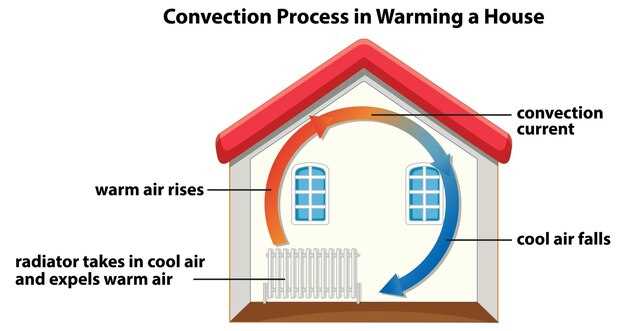
Thermostats play a crucial role in modern heating, ventilation, and air conditioning (HVAC) systems. They serve as the central control unit, regulating indoor temperatures to ensure comfort and energy efficiency. By maintaining the desired temperature within a space, thermostats not only enhance occupant comfort but also contribute to the longevity of HVAC systems.
In essence, a thermostat functions by sensing the ambient temperature and comparing it to a preset target temperature. When the temperature deviates from this setpoint, the thermostat activates or deactivates heating or cooling systems accordingly. This responsive mechanism is vital for creating a stable indoor environment, particularly in regions with extreme weather conditions.
The evolution of thermostats has led to the development of various types, including mechanical, digital, and smart thermostats. Each category brings unique features and functionalities, catering to different user preferences and technological advancements. Understanding the distinctions among these types is fundamental for selecting the most appropriate thermostat for specific needs, thereby optimizing temperature control and enhancing energy savings.
How to Choose the Right Thermostat for Your Home

Selecting the appropriate thermostat for your home involves several key considerations. First, assess your heating and cooling system. Different thermostats are compatible with specific system types, such as central air conditioning, heat pumps, or radiant heating. Ensure the thermostat you choose matches your system to achieve optimal performance.
Next, evaluate your home’s size and layout. Larger homes may benefit from models that can control multiple zones, allowing for different temperature settings in various areas. Conversely, smaller homes may require a simpler, single-zone thermostat that is easy to use and program.
Smart thermostats are increasingly popular due to their advanced features. They can learn your schedule, adjust temperatures based on your preferences, and be controlled remotely via smartphone apps. If convenience and energy savings are priorities, a smart thermostat may be the best choice for your household.
Consider the ease of installation and usability of the thermostat. Some models are designed for DIY installation, while others might require professional installation. Look for user-friendly interfaces, clear displays, and accessible controls to ensure comfortable operation for all family members.
Energy efficiency is another crucial factor. Many modern thermostats provide energy-saving features such as scheduling and adaptive learning. Choosing an energy-efficient model can help lower utility bills and minimize your carbon footprint.
Finally, examine the thermostat’s compatibility with home automation systems. If you already have smart home devices, opting for a thermostat that integrates with these systems can enhance convenience and improve your overall smart home experience.
Programming Your Thermostat for Optimal Energy Savings

Programming your thermostat effectively can lead to significant energy savings and improved comfort in your home. To start, it is essential to understand your household’s daily and weekly routines. Identify when you are typically home and when you are away. This information will guide how you set your schedule.
For optimal energy savings, set your thermostat a few degrees lower during the winter when you’re away and a few degrees higher during the summer. A recommended strategy is to set the temperature to around 68°F (20°C) in the winter while you are home and lower it to 60°F (15°C) while you are away or asleep. In the summer, setting the thermostat to 78°F (26°C) when home and increasing it to 85°F (29°C) while away can significantly reduce energy costs.
Consider utilizing the scheduling features available in programmable thermostats. You can set different temperatures for specific periods, such as weekdays and weekends. Most modern thermostats have a 7-day programmable option, allowing you to customize settings for each day of the week.
In addition to regular scheduling, take advantage of the vacation mode if you plan to be away for an extended period. This feature maintains an energy-efficient temperature without the need for constant manual adjustments.
Regular maintenance is crucial for your thermostat’s efficiency. Ensure that your thermostat is properly calibrated, and clean or replace air filters as needed. This not only improves temperature regulation but can also contribute to energy savings.
Finally, consider using smart thermostats that can learn your habits and adjust settings automatically. Many of these devices offer features such as remote access via smartphone apps, which allows you to modify settings from anywhere, providing further flexibility and control over your energy use.
Common Thermostat Issues and How to Troubleshoot Them
Thermostats can exhibit various issues that hinder their ability to maintain the desired temperature. Understanding common problems and their solutions can enhance the efficiency of your heating and cooling systems.
One prevalent issue is incorrect temperature readings. If the thermostat displays an inaccurate temperature, it may be due to improper placement. Ensure the thermostat is not located near heat sources, drafts, or direct sunlight. If it’s a malfunctioning sensor, recalibrating or replacing the device may be necessary.
Another common problem is unresponsive thermostats. If adjustments do not register, begin by checking the power supply. Ensure that the circuit breaker is not tripped, and replace batteries if the thermostat is battery-operated. A reset of the thermostat may also resolve the issue.
Thermostats may also fail to cycle on and off as intended. This can lead to inconsistent temperatures. Check the settings to ensure they are correctly programmed. Additionally, examine the wiring for loose connections or damage. If issues persist, consulting a professional might be required.
Frequent system cycling, or short cycling, can result from a thermostat placed too close to duct vents or windows. Relocating the thermostat may fix the problem. Also, inspect air filters as clogged filters can hinder airflow, causing the system to cycle improperly. Regular maintenance, including filter changes, can prevent this issue.
Lastly, the thermostat screen may become frozen or display erratic behavior. This often indicates a software glitch. Power cycling the thermostat can help restore functionality. If issues continue, restoring factory settings or updating firmware might be necessary.
Troubleshooting these common thermostat issues can often be done without professional intervention, saving time and repair costs. However, persistent problems should always be addressed by a qualified HVAC technician.


